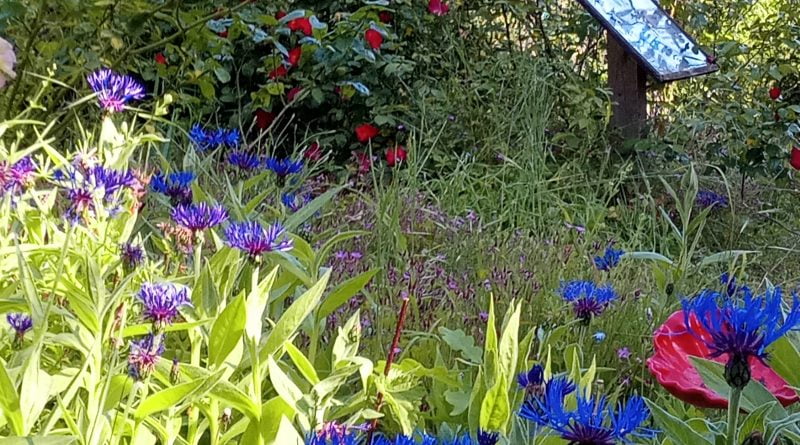The Harry Patch Garden at Clyst Vale
Many staff and students know the story of the Harry Patch peace garden but I know that staff who are new to Clyst Vale and new students and parents have little idea as to why we have a big garden behind the Humanities block dedicated to Mr Patch and all of those who served in the Great War 1914-1918.
The idea of creating a garden came after one of our year 9 history trips to the First World War battlefields. We ran this trip from 2014 until covid sadly put a stop to our planned trip in 2020. To see huge, beautifully tended, Commonwealth War Cemetaries such as Tyne Cot is very moving. We also made a point of visiting the German Cemetary near Ypres. (conscript armies from all the nations)
One of my former students, Luke Bowen, had as a year 9 history student done a research project on the last survivors of the Great War and discovered that Harry Patch, who served in the Duke of Cornwall Light Infantry was then aged 109 and was living in a care home in Wells Somerset. I phoned the home and asked if he would be willing to meet me. He was willing to do so and my daughter and I visited him the following Sunday. He was so impressive. He was happy to chat to us and showed me a letter that he had just received from the Belgian King awarding him their highest military medal. He always insisted that he was no one special. He was badly wounded as a 19 year old and his 3 best friends were killed on 22nd September 1917, which meant that 22nd September became his special memorial day. He became a pacifist and described war as ” nothing more than organised mass murder”. When he was over 100 he met a German survivor who had also fought in Belgium and they became firm friends. I was invited to his 111th birthday party in Wells and my students at the time made beautiful birthday cards for him. He died just a few weeks later and I went to his funeral and then went to Westminster Abbey that autumn with an A level History student, Cissy Street-Mellor, for a service to honour the last British Servicemen from the Great War.
To create a garden I had a huge amount of help from Mrs Manaton. We dug a garden, over the summer holidays, and then attempted to find plants to represent the nations and the young men who fought.
Local garden centres donated bulbs and my year 12 tutor group of the time planted 600 bulbs.
We have poppies, as the Commonwealth War flower of remembrance is the poppy, and have tried to include as many nations as possible. When we could not find a flower we bought statues. We now have
For France….Cornflowers
Germany….forget me nots
New Zealand…..kiwi statue (New Zealand, of all the nations, lost the highest percentage of their young men)
India…elephant statue
Australia …koala statue (which overlooks the garden)
The African nations…..Agapanthus (African lily)
Wales…..daffodils
Scotland….thistle
Canada…tulip named “Calgary”
USA….Philadelphus named” Minnesota Morning”
We also have rosemary for remembrance, five “Peace” roses and a special rose named “Talbot House” which was grown to resemble the shape of a poppy. Talbot House was the place near Ypres where British troops were able to stay for rest and recouperation away from the front line. Harry Patch went there and commented that in the garden at Talbot House he heard bird song for the first time since arriving in Belgium.
I have always had help looking after the garden from my tutor group. Eve Wollen and her family were especially helpful over the past two years. This year 12HP were able to help with a big weeding session.
For 22nd September 2023 we will be doing a fundraising event to remember the victims of the Great War and all subsequent wars. As a student of history it is horrific for me to think that we now have another war in Europe with young men living in trenches. Once again, sadly, we have so many innocent victims of war.
The pictures of the garden show that it is still flourishing, although it always needs work! What was once a grass bank being the Humanities block is now a garden that attracts so many insects and birds. Like the Talbot House garden we also have a lot of birdsong.
Mrs Padden


